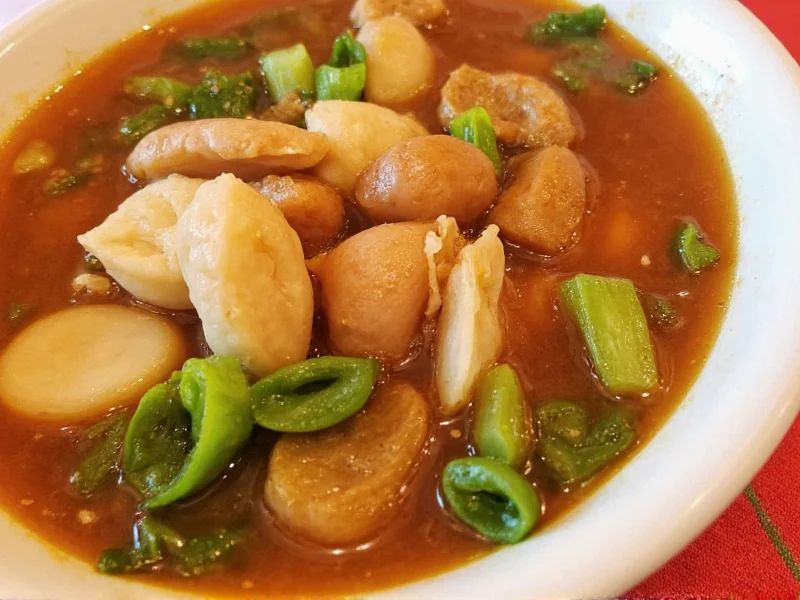Hot and sour soup represents one of China's most iconic culinary creations, originating from Sichuan province where chefs perfected the art of balancing contrasting flavors. This beloved dish has traveled globally while maintaining its essential character—simultaneously warming and refreshing, complex yet approachable. Understanding the proper technique transforms simple ingredients into a restaurant-quality experience at home.
The Essential Components of Authentic Hot and Sour Soup
True hot and sour soup achieves harmony between vinegar's sharp tang and chili's building heat, supported by umami-rich broth and delicate textures. The magic happens when these elements combine without any single flavor dominating. Traditional recipes use Chinese black vinegar for depth and dried red chilies for gradual heat rather than immediate burn.
Classic Hot and Sour Soup Recipe
This tested recipe yields four generous servings and requires standard kitchen equipment. For best results, gather all ingredients before beginning—the cooking process moves quickly once you start.
| Prep Time | Cook Time | Total Time | Servings |
|---|---|---|---|
| 15 minutes | 15 minutes | 30 minutes | 4 |
Ingredients
- 6 cups chicken or vegetable broth (low sodium)
- 4 oz firm tofu, cut into thin strips
- 2 oz dried wood ear mushrooms, rehydrated and sliced
- 2 oz dried lily flowers, rehydrated (optional but traditional)
- 2 oz bamboo shoots, julienned
- 2 tablespoons Chinese black vinegar (Chinkiang vinegar)
- 1-2 tablespoons chili oil with sediment
- 1 tablespoon soy sauce
- 1 teaspoon sesame oil
- 1 tablespoon cornstarch mixed with 2 tablespoons cold water
- 2 eggs, lightly beaten
- 1 teaspoon freshly grated ginger
- Salt to taste
- White pepper to taste
Step-by-Step Preparation
- Prepare ingredients: Rehydrate dried mushrooms and lily flowers in warm water for 15 minutes. Drain and slice mushrooms, keeping lily flowers whole.
- Build the broth: In a medium pot, bring broth to gentle simmer with ginger, soy sauce, and bamboo shoots. Simmer 5 minutes to infuse flavors.
- Add textures: Stir in tofu, rehydrated mushrooms, and lily flowers. Maintain gentle simmer—boiling will break delicate ingredients.
- Create signature tang: Whisk in Chinese black vinegar gradually, tasting after each addition. Authentic hot and sour soup should have pronounced but balanced sourness.
- Adjust heat level: Add chili oil incrementally, remembering heat intensifies as soup sits. Traditional versions build warmth rather than immediate burn.
- Thicken properly: Stir cornstarch mixture again (it separates quickly) and drizzle into soup while stirring constantly. Soup should coat the back of a spoon.
- Finish with eggs: Reduce heat to low. Slowly pour beaten eggs in thin stream while stirring gently. Eggs will form delicate ribbons.
- Final seasoning: Remove from heat. Stir in sesame oil and adjust salt and white pepper. Avoid oversalting as soy sauce contributes咸味.
Mastering Key Ingredients
Understanding each component's role elevates your hot and sour soup from good to exceptional. Chinese black vinegar provides complex acidity with subtle smokiness unlike Western vinegars. Dried wood ear mushrooms offer unique crunch that fresh mushrooms can't replicate. Chili oil with sediment delivers gradual heat while chili flakes create immediate burn—choose accordingly based on preference.
Avoiding Common Preparation Mistakes
Many home cooks make critical errors that compromise authentic flavor. Adding vinegar at the end prevents proper flavor integration—simmer it briefly to mellow harsh notes. Over-thickening with cornstarch creates unappealing gelatinous texture; aim for light coating consistency. Boiling after adding eggs scrambles them rather than forming elegant ribbons. Most importantly, tasting and adjusting throughout cooking ensures proper balance rather than waiting until the end.
Thoughtful Variations for Dietary Needs
This versatile recipe adapts beautifully to different requirements without sacrificing authenticity. For vegetarian hot and sour soup, substitute mushroom broth and verify soy sauce contains no fish products. Gluten-free preparation requires tamari instead of regular soy sauce and checking chili oil ingredients. Protein variations include adding shredded cooked chicken at the end or substituting mock duck for meatless versions. Some regional adaptations incorporate shrimp or pork, though traditional Sichuan versions focus on plant-based ingredients.
Serving and Storage Recommendations
Hot and sour soup performs best served immediately while flavors are vibrant. Garnish with fresh cilantro and additional white pepper at the table. The soup thickens upon standing—keep extra broth nearby to adjust consistency when reheating. Store leftovers in airtight container for up to three days; flavors often improve overnight as ingredients meld. Reheat gently without boiling to preserve texture. Freezing isn't recommended as cornstarch-based soups separate when thawed.











 浙公网安备
33010002000092号
浙公网安备
33010002000092号 浙B2-20120091-4
浙B2-20120091-4